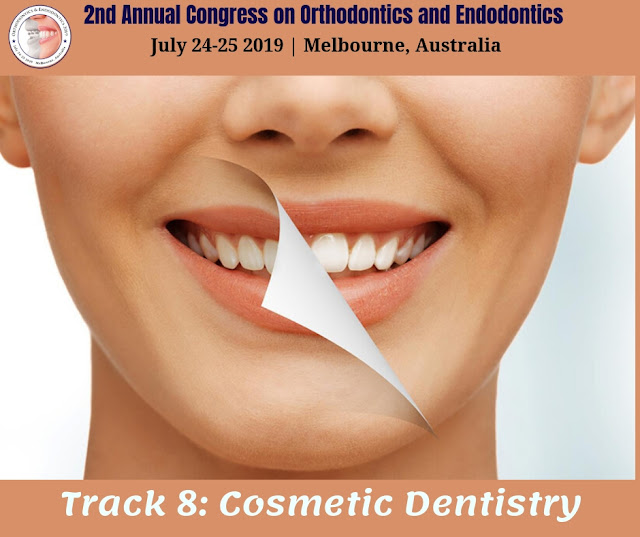Track 8: Cosmetic Dentistry
Cosmetic Dentistry is the term dentists use to describe dental procedures that can improve the appearance of the teeth. Simply put, most cosmetic dental procedures are non-essential, but they can offer a wide range of benefits, including making regular cleaning easier, improving a patient’s confidence and even reducing teeth grinding.
Cosmetic Dentistry can be divided into 4 types:
Cosmetic Dentistry can be divided into 4 types:
Inlays and Onlays
Inlays and Onlays are also known as indirect fillings. Unlike some treatments, which fully take place in your dentist’s office, inlays and onlays are manufactured in dental laboratories. Inlays are normally used in cases of mild to moderate decay or if insufficient tooth remains to support a filling. If there is no damage to tooth cusps (the little “hills” on the top of teeth, in non-scientific terms), an inlay is placed directly on top of the tooth surface. If, however, the cusps or a substantial portion of the tooth are damaged an onlay is placed to go over the tooth’s entire surface. Inlays and Onlays are constructed, in dental laboratories, from a composite resin material and are then fixed to teeth with adhesive dental cement. Because inlays and onlays provide support to strengthen teeth, restore their shape, and prevent further tooth decay or deterioration, they are cosmetic, restorative, and preventive!
Dental Veneers
Dental veneers are normally constructed from medical-grade ceramic and individually created for each patient to ensure that they resemble the patient’s natural teeth. Veneers are often indistinguishable from real teeth and are used for many cosmetic problems, including crooked teeth, damaged or cracked enamel, and unsightly gaps between teeth. Veneers are applied to the front of each tooth using a dental adhesive.
Composite Bonding
Composite bonding is the repair of decayed, damaged or aesthetically unpleasing teeth using materials that are close fits to the color of your natural tooth enamel. Your dentist removes tooth decay and applies composite onto the tooth’s surface. Then, your dentist “carves” the composite into a pleasant and functional shape and cures it with high-intensity light. The name of this process is often shortened to “bonding” but, whatever the name, the process effectively covers tooth damage while restoring the appearance of the original tooth – often, bonding even improves the look of the original tooth or teeth! Compared to many other cosmetic procedures, bonding is inexpensive, making it an economical and effective treatment for patients with decay, chipped or cracked teeth, or worn-down tooth edges.
Teeth Whitening
Teeth whitening is one of the simplest and best-known cosmetic dentistry procedures. Teeth whitening is recommended when teeth become stained and worn due to the effects of some foods, drinks, medications, and personal habits including tobacco use. Professional teeth whitening or teeth bleaching takes place in your dentist’s office after your dentist first ensures that no plaque, tartar, or other debris are present. Teeth can be bleached to shades that are even lighter than those of the original teeth!
Dental Implants
Dental implants replace teeth if they are lost due to accident, extraction, or other dental issues. Your dentist places a small titanium screw into the jaw where the missing tooth used to be. The screw, after bonding to the bone, becomes support for a crown. Once the crown is placed on the screw, implants fit in perfectly with their surrounding natural teeth. Because the jaw’s bone and supporting tissues fuse to the implant, implants are permanently secured into place. However, during the screw placement period patients need to be particularly attentive to their dental hygiene. Food debris and plaque must not be allowed to accumulate in the area of the implant!
Share your research on Cosmetic Dentistry at our upcoming 2nd Annual Congress on Orthodontics and Endodontics to be held in Melbourne, Australia from July 24-25 2019.
Share your research on Cosmetic Dentistry at our upcoming 2nd Annual Congress on Orthodontics and Endodontics to be held in Melbourne, Australia from July 24-25 2019.


Dentists are very important to have and to go see regularly. They will make sure that your teeth are healthy and that there are no problems with your smile. General family dentist raleigh care for the whole family so it is good to find one you can trust.
ReplyDeleteSuch an informative post on helping anxious kids feel safe during dental care. It is reassuring for families to know there are gentle options like happy gas dental treatment, and for some children, carefully planned dental treatment under general anaesthesia.
ReplyDelete